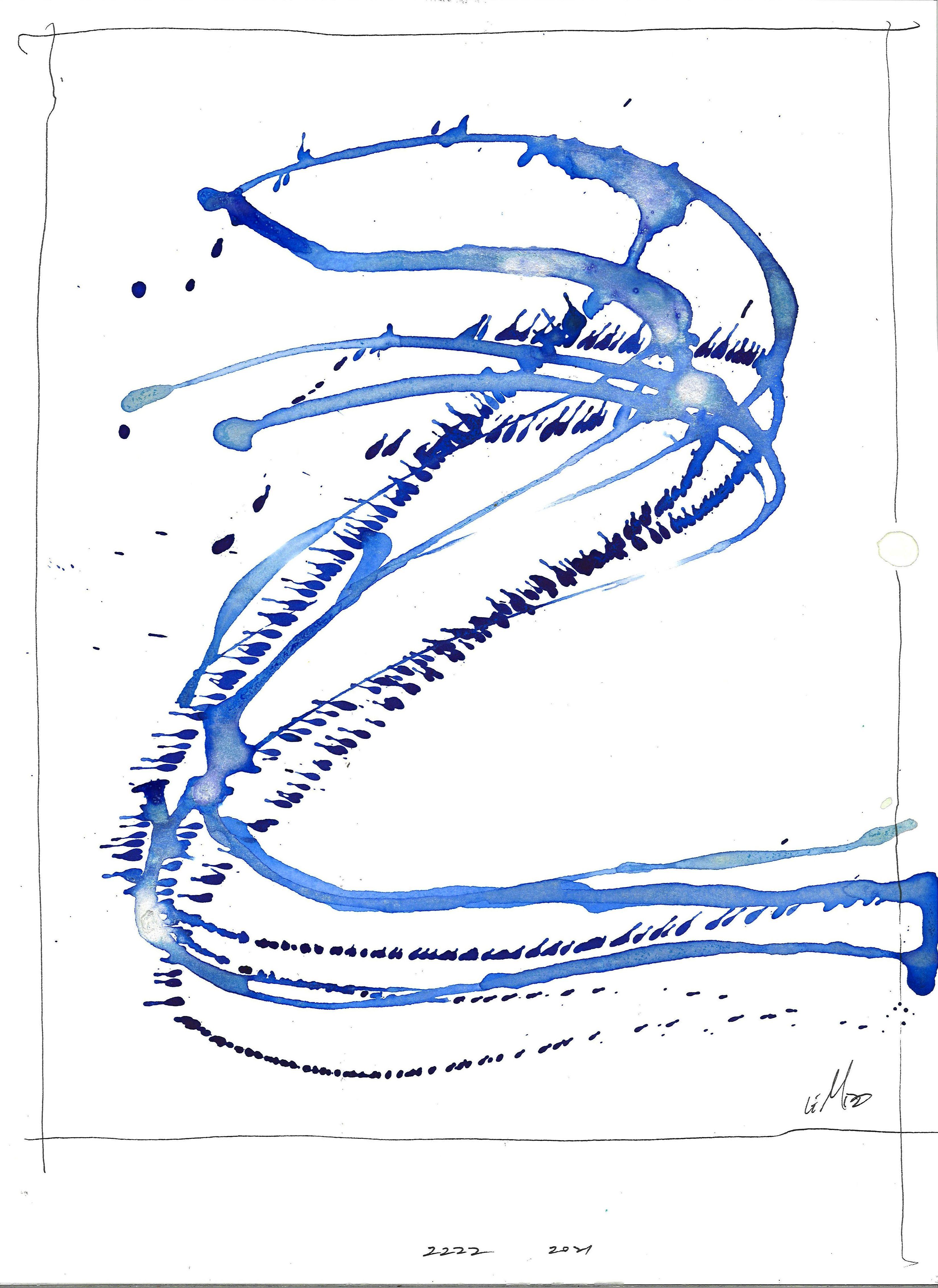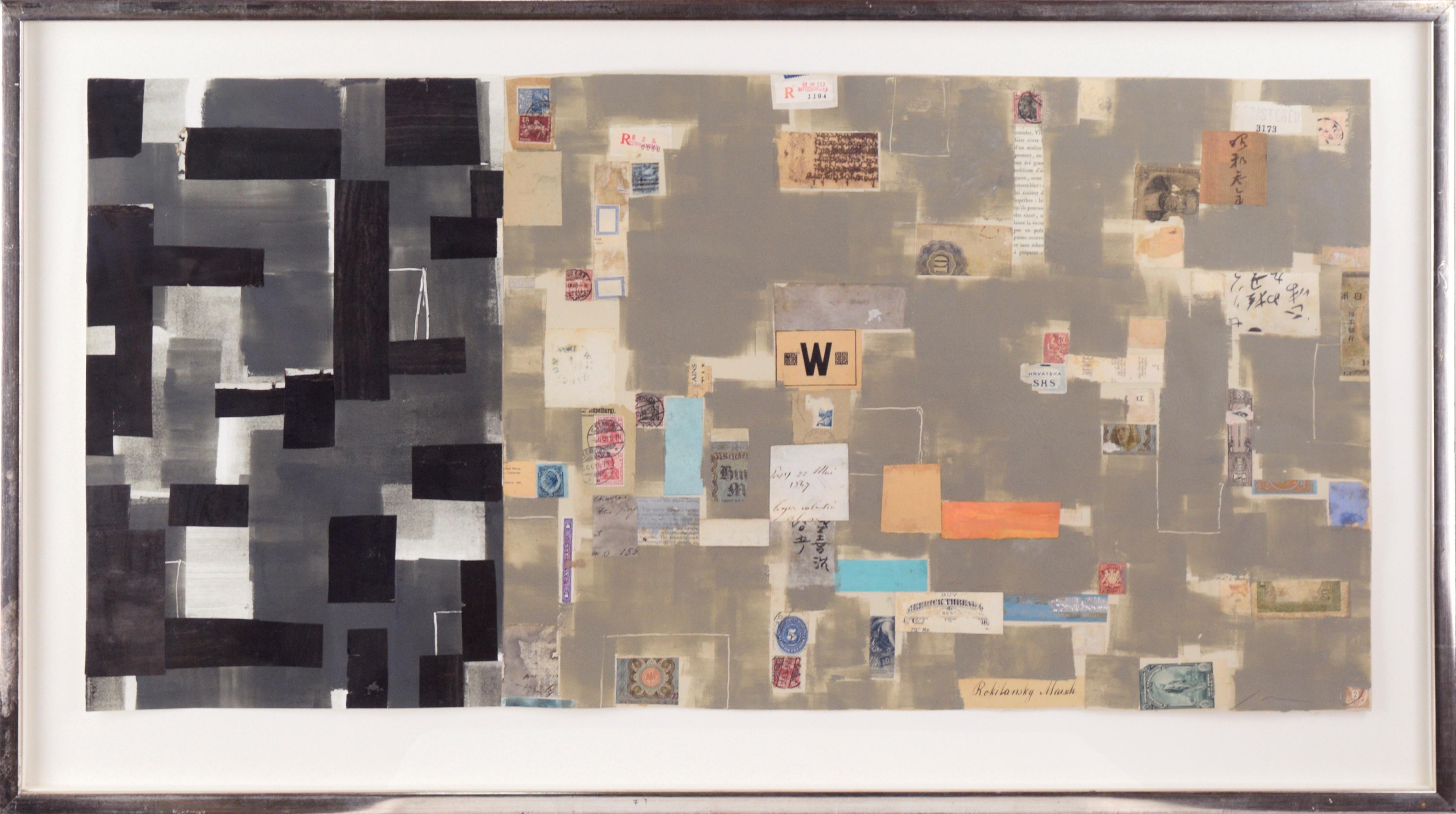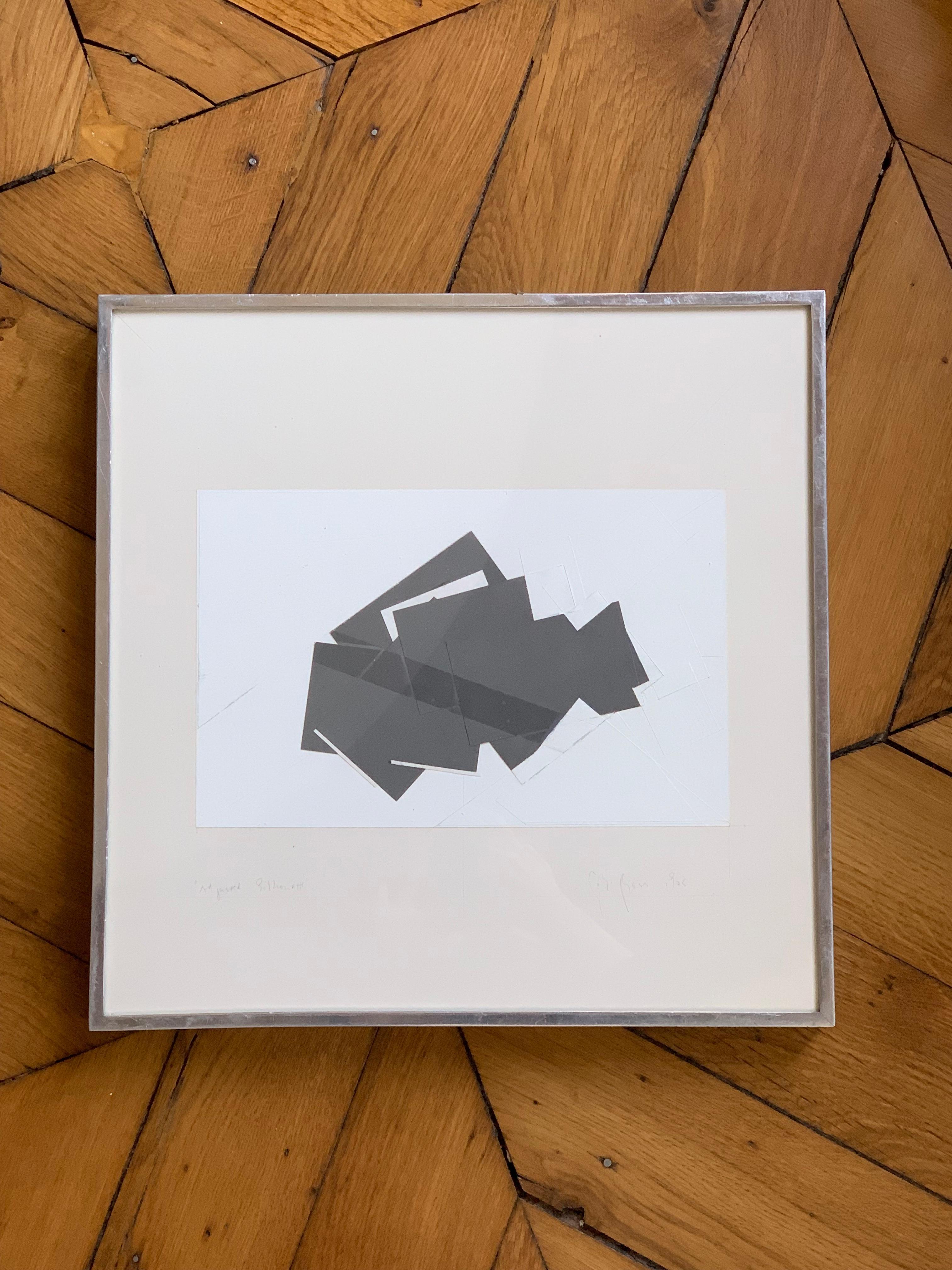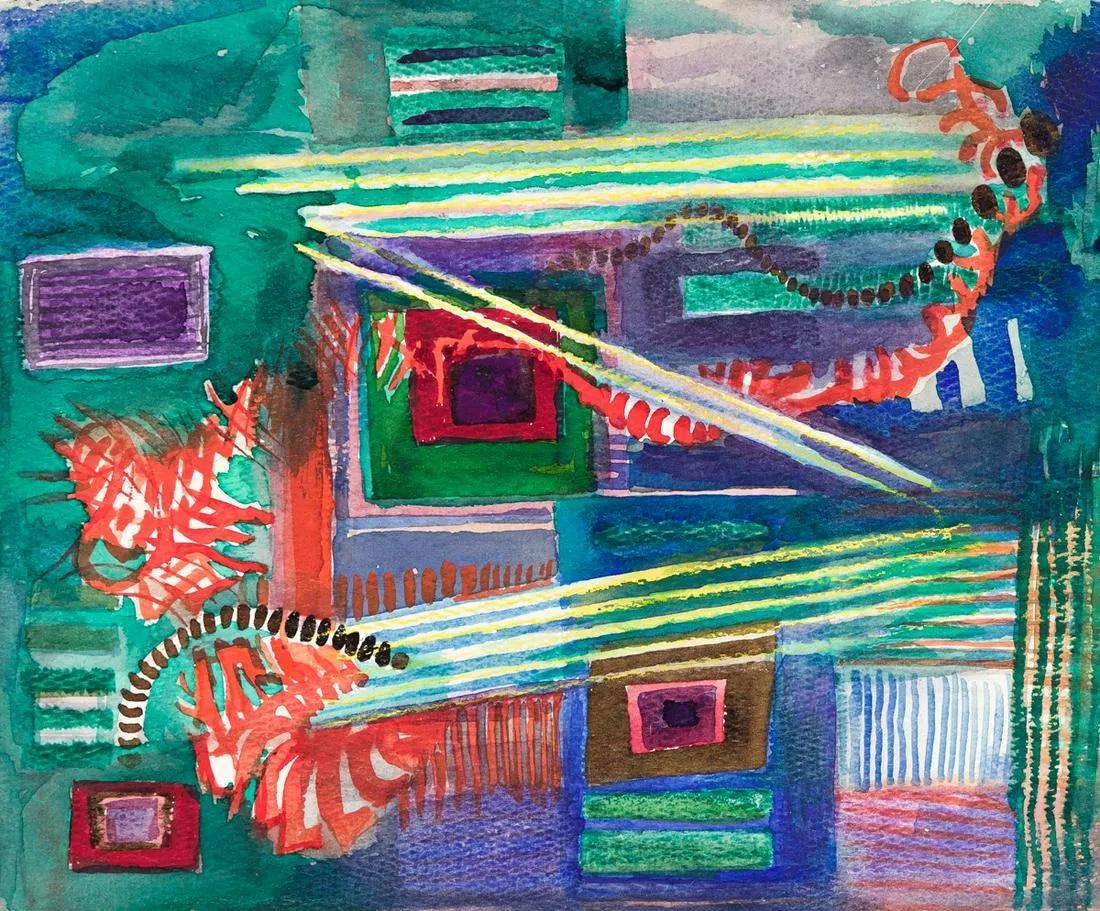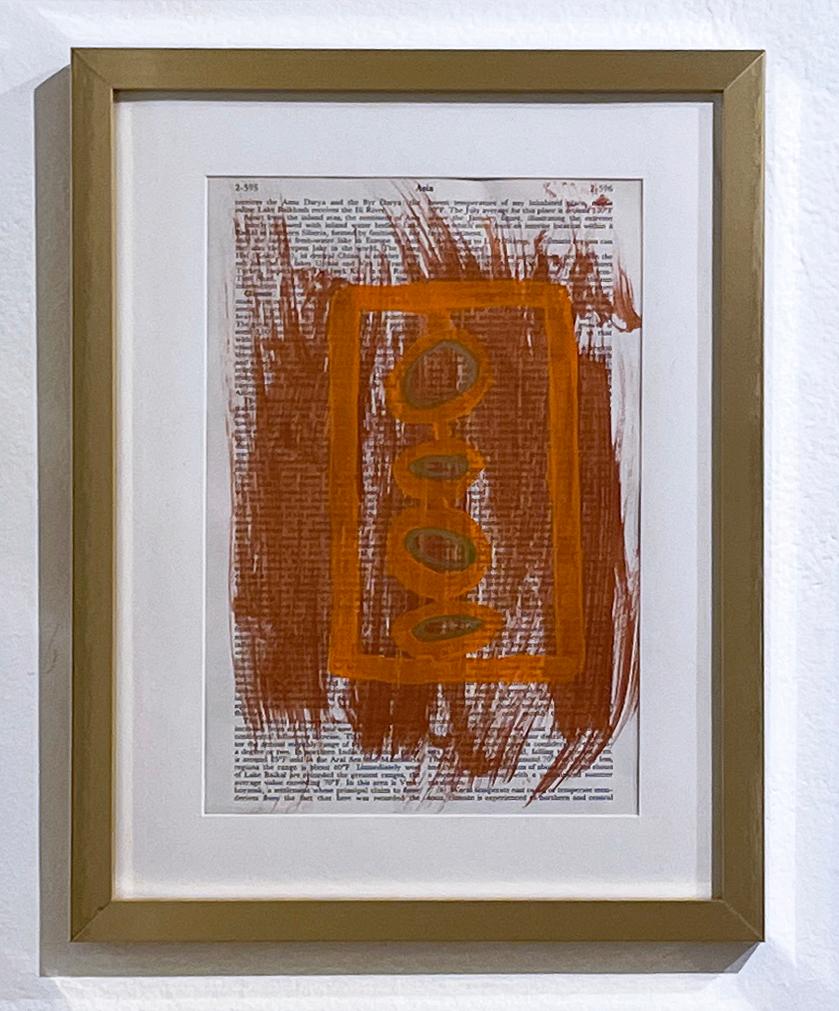Items Similar to Abstract Non Objective Work on Paper Guggenheim Woman Artist Drawing 1940s w/c
Want more images or videos?
Request additional images or videos from the seller
1 of 8
Hilla Rebay von EhrenwiesenAbstract Non Objective Work on Paper Guggenheim Woman Artist Drawing 1940s w/c1940s
1940s
About the Item
Abstract Non Objective Work on Paper Guggenheim Woman Artist 1940s Drawing w/c
HILLA REBAY (1890 - 1967, GERMAN/AMERICAN)
Abstract
watercolor and graphite on paper
14 x 16 1/2 inches
Watercolor on paper, c. 1940's
Provenance: Spanierman Modern, New York Private Collection
BIO
A woman credited largely for the existence of the Solomon R. Guggenheim Museum in New York City, Hilla Rebay also was an accomplished artist in modernist styles that included collage and biogmorphic-linear oil paintings. She is remembered primarily for being the key person in first exposing the American public to avant-garde art and creating revolutionary museum environments for that art. To remind the public that Rebay was an artist in her own right, curators at the Guggenheim Museum held a retrospective of her work in the spring and summer of 2005.
Hilla Rebay (pronounced reh-bye) was born to minor nobility in Strasbourg, Alsace and had the full name of Baroness Hildegard Anna Augusta Elisabeth Rebay von Ehrenwiesen. Her father, a career army officer from Bavaria, and her mother encouraged her obvious childhood art talent. She studied locally and then enrolled in 1909 at the Academie Julian in Paris.
There she was much influenced by avant-garde movements especially theosophist artists and writers led by Wassily Kandinsky "who helped formulate her lifelong belief in the power of intuition in art-making and other areas of life" (Glueck). In 1910, she spent time in Munich where she was further exposed to modern art, and she returned to Paris in 1913, having exhibited work in Cologne and Munich. In Paris she studied at the Academie Julian.
By 1914, she was exhibiting with the Secession Group in Munich, the Salon des Independants in Paris, and the November Gruppe in Berlin--all rebelling against prevalent realism and traditional teaching methods. In Berlin, she associated with many modernist artists including Vasily Kandinsky, Paul Klee, and Marc Chagall. In 1917, she med Rudolph Bauer, a German painter in non-objective styles who became her long-time lover and in the future the cause of controversy because she was accused of devoting disproportionate exhibition space to him at the Guggenheim Museum. It was said that her enthusiasm for him and his work was "unbounded" (Glueck) and that he inspired her paintings "alive with restless, jostling, organic forms" (Glueck).
Hilla Rebay first visited the United States in 1927 and stayed for an extended time period, which included giving painting lessons to Louise Nevelson, seeking portrait commissions, designing posters and exhibiting her own work at venues including the Worcester Art Mluseum and a Manhattan gallery. Among her portrait commission subjects was Solomon Guggenheim, whose wealthy family had extensive western mining interests. Rebay had met Solomon and his wife Irene when they purchased two of her paintings at the Manhattan show. To that time, the couple were collectors of conventional art, but during the sittings, Hilla talked to him of what was going on in avant-garde art circles. She brought painters of leading-edge styles to meet Guggenheim and encouraged him to collect their art, which he did--filling his Plaza Hotel apartment.
Rebay supervised the collection, and in 1937, she led the establishment of a Guggenheim foundation to build "The Museum of Non-Objective Art," achieved in 1939 in rented gallery space on 54th Street. The main focus of the collection was works of the Dutch De Stijl Group that included Piet Mondrian and Theo van Doesburg, and of Bauhaus artists from Germany such as Paul Klee, Vasily Kandinsky, and Laszlo Moholy-Nagy.
Although she was committed to purely non-objective works, she added to the collection abstract works by George Seurat, Henri Matisse, Henri Rousseau, Pablo Picasso, and others in France who were experimenting with Cubism, Futurism, etc.
The Foundation directors bought land between 88th and 89th Streets on Fifth Avenue and commissioned Frank Lloyd Wright to design a museum building. The collection was temporarily housed in a mansion on the grounds, and Hilla, who had a strong interest in mysticism, "created an unforgettable, hushed, other worldly atmosphere . . . People coming in from the noise and bustle of the streets found themselves transported into a seemingly higher spiritual dimension" (Rubinstein). There was gray fabric on the walls, plain, minimal frames on the paintings, and Bach music in the background---all creating a sense of quiet refinement and revolutionary for a museum setting.
During this time, Rebay was reaching out to many young non-objective American artists including Jackson Pollock and Rudolf Bauer who had emigrated from Germany, by giving them money and exhibiting their work.
She was also at the center of controversy from a a variety of sources. Left-wing activists made fun of her mysticism; reactionaries found her much too liberal; and most of her critics thought she was way too autocratic. Of that era, she has been described as "a complicated dynamic woman, take-charge and bossy, who aroused jealousy in the art world by her closeness (though it was probably not romantic) to Guggenheim." (Glueck). In addition, she was disdained during World War II because she was German and was accused of being a German spy, rumors that were promoted by Rudolf Bauer, whom she and others thought was jealous of her position with Guggenheim.
In 1951, two years after Guggenheim's death, Hilla Rebay resigned as Director but remained a trustee of the collection, and lived in Greens Farms, Connecticut. During her career as an administrator, she had continued as a painter and created canvases of geometric shapes and ones that expressed pure color and rhythm. She also authored several books including one titled "Wassily Kandinsky", and wrote articles for the "Carnegie Institute Magazine" and "Southern Literary Digest. " However, her enduring reputation is for her influence in bringing non-objective art to America.
- Creator:Hilla Rebay von Ehrenwiesen (1890-1967, American)
- Creation Year:1940s
- Dimensions:Height: 20 in (50.8 cm)Width: 23 in (58.42 cm)Depth: 2 in (5.08 cm)
- Medium:
- Movement & Style:
- Period:
- Condition:
- Gallery Location:New York, NY
- Reference Number:1stDibs: LU1156210284592
Hilla Rebay von Ehrenwiesen
A woman credited largely for the existence of the Solomon R. Guggenheim Museum in New York City, Hilla Rebay also was an accomplished artist in modernist styles that included collage and biogmorphic-linear oil paintings. She is remembered primarily for being the key person in first exposing the American public to avant-garde art and creating revolutionary museum environments for that art. To remind the public that Rebay was an artist in her own right, curators at the Guggenheim Museum held a retrospective of her work in the spring and summer of 2005. Hilla Rebay was born to minor nobility in Strasbourg, Alsace. Her father, a career army officer from Bavaria, and her mother encouraged her obvious childhood art talent. She studied locally and then enrolled in 1909 at the Academie Julian in Paris. There she was much influenced by avant-garde movements especially theosophist artists and writers led by Wassily Kandinsky. In 1910, she spent time in Munich where she was further exposed to modern art, and she returned to Paris in 1913, having exhibited work in Cologne and Munich. In Paris she studied at the Academie Julian. By 1914, she was exhibiting with the Secession Group in Munich, the Salon des Independants in Paris, and the November Gruppe in Berlin--all rebelling against prevalent realism and traditional teaching methods. In Berlin, she associated with many modernist artists including Vasily Kandinsky, Paul Klee, and Marc Chagall. In 1917, she med Rudolph Bauer, a German painter in non-objective styles who became her long-time lover and in the future the cause of controversy because she was accused of devoting disproportionate exhibition space to him at the Guggenheim Museum. Hilla Rebay first visited the United States in 1927 and stayed for an extended time period, which included giving painting lessons to Louise Nevelson, seeking portrait commissions, designing posters and exhibiting her own work at venues including the Worcester Art Museum and a Manhattan gallery. Among her portrait commission subjects was Solomon Guggenheim, whose wealthy family had extensive western mining interests. Rebay had met Solomon and his wife Irene when they purchased two of her paintings at the Manhattan show. To that time, the couple were collectors of conventional art, but during the sittings, Hilla talked to him of what was going on in avant-garde art circles. She brought painters of leading-edge styles to meet Guggenheim and encouraged him to collect their art, which he did--filling his Plaza Hotel apartment. Rebay supervised the collection, and in 1937, she led the establishment of a Guggenheim foundation to build "The Museum of Non-Objective Art," in 1939. The main focus of the collection was works of the Dutch De Stijl Group that included Piet Mondrian and Theo van Doesburg, and of Bauhaus artists from Germany such as Paul Klee, Vasily Kandinsky, and Laszlo Moholy-Nagy. During this time, Rebay was reaching out to many young non-objective American artists including Jackson Pollock and Rudolf Bauer.
About the Seller
5.0
Gold Seller
These expertly vetted sellers are highly rated and consistently exceed customer expectations.
Established in 2008
1stDibs seller since 2019
165 sales on 1stDibs
Typical response time: <1 hour
- ShippingRetrieving quote...Ships From: Pawling, NY
- Return PolicyA return for this item may be initiated within 3 days of delivery.
More From This SellerView All
- Abstract Non Objective Work on Paper Guggenheim Woman Artist Drawing 1940s w/cBy Hilla Rebay von EhrenwiesenLocated in New York, NYAbstract Non Objective Work on Paper Guggenheim Woman Artist 1940s Drawing w/c HILLA REBAY (1890 - 1967, GERMAN/AMERICAN) Abstract Watercolor on paper, c. 1945. 8x9 inches. Provenance: Estate of Hilla Rebay; Gary Snyder Fine Art, NY. In March of 1996, Snyder Fine Art opened its exhibition, Museum of Non-Objective Painting: American Abstract Art. Gary Snyder acquired a large body of works from the Hilla Rebay Estate, many of the works on paper spent decades archivaly stored in flat files with fresh colors and immaculate paper. BIO A woman credited largely for the existence of the Solomon R. Guggenheim Museum in New York City, Hilla Rebay also was an accomplished artist in modernist styles that included collage and biogmorphic-linear oil paintings. She is remembered primarily for being the key person in first exposing the American public to avant-garde art and creating revolutionary museum environments for that art. To remind the public that Rebay was an artist in her own right, curators at the Guggenheim Museum held a retrospective of her work in the spring and summer of 2005. Hilla Rebay (pronounced reh-bye) was born to minor nobility in Strasbourg, Alsace and had the full name of Baroness Hildegard Anna Augusta Elisabeth Rebay von Ehrenwiesen. Her father, a career army officer from Bavaria, and her mother encouraged her obvious childhood art talent. She studied locally and then enrolled in 1909 at the Academie Julian in Paris. There she was much influenced by avant-garde movements especially theosophist artists and writers led by Wassily Kandinsky "who helped formulate her lifelong belief in the power of intuition in art-making and other areas of life" (Glueck). In 1910, she spent time in Munich where she was further exposed to modern art, and she returned to Paris in 1913, having exhibited work in Cologne and Munich. In Paris she studied at the Academie Julian. By 1914, she was exhibiting with the Secession Group in Munich, the Salon des Independants in Paris, and the November Gruppe in Berlin--all rebelling against prevalent realism and traditional teaching methods. In Berlin, she associated with many modernist artists including Vasily Kandinsky, Paul Klee, and Marc Chagall. In 1917, she med Rudolph Bauer...Category
1940s Abstract Abstract Drawings and Watercolors
MaterialsPaper, Watercolor
- ABSTRACT American Woman Abstract Non-objective Mid 20th Century Modern DrawingBy Irene Rice PereiraLocated in New York, NYABSTRACT American Woman Abstract Non-objective Mid 20th Century Modern Drawing Irene Rice Pereira (1902-1971) Abstract 8 1/2 x 5 1/2 inches Watercolor, gouache, and ink on black pap...Category
1950s Abstract Abstract Drawings and Watercolors
MaterialsPaper, Watercolor, Gouache
- ABSTRACT American Woman Abstract Non-objective Mid 20th Century Modern DrawingBy Irene Rice PereiraLocated in New York, NYABSTRACT American Woman Abstract Non-objective Mid 20th Century Modern Drawing Irene Rice Pereira (1902-1971) Abstract 12 x 6 1/2 inches Watercolor, gouache, and ink on black paper ...Category
1950s Abstract Abstract Drawings and Watercolors
MaterialsPaper, Watercolor, Gouache
- Abstract American Modernism Mid-Century WPA Era Drawing Woodstock 20th CenturyBy Konrad CramerLocated in New York, NYAbstract American Modernism Mid-Century WPA Era Drawing Woodstock 20th Century, Sight size is 16 x 12 inches. The drawing is currently at the framers. A photo will be posted asap. A...Category
1930s Abstract Abstract Drawings and Watercolors
MaterialsPaper, Ink, Watercolor
- 1, 000 piece Museum Quality Collection of Art & Objects from NYC 1939 Worlds FairBy Ilya BolotowskyLocated in New York, NY1,000 piece Museum Quality Collection of Art & Objects from NYC 1939 Worlds Fair. Ilya Bolotowsky (1907-1981) "1939 World’s Fair Mural Study for the Hall of Medical Sciences...Category
1930s Abstract Geometric Abstract Drawings and Watercolors
MaterialsPaper, Gouache, Canvas, Plaster, Oil
- American Cubist Abstract Art Deco Avant-Garde Constructivism 20th Century ModernLocated in New York, NYAmerican Cubist Abstract Art Deco Avant-Garde Constructivism 20th Century Modern Florence Henri (American, 1893-1982) Composition 18 1/2 x 12 1/2 in...Category
1920s Abstract Abstract Paintings
MaterialsPaper, Gouache
You May Also Like
- 2222By Mark LemboLocated in Boston, MAAbout the piece: - Single white mat. 20Hx16W - Acrylic ink and watercolor on paper, 2021 Words that describe this piece:abstract, intuitive, outsider, bright, yellow, gold Artist ...Category
21st Century and Contemporary Abstract Abstract Drawings and Watercolors
MaterialsInk, Watercolor, Paper
- Fractured ToonBy Mark LemboLocated in Boston, MAAbout the piece: Happy accident(s). Chaos amid the order? Words that describe this piece:panels, comics, structure, chaos, cartoon Artist Biography: Mark A. Lembo Script M Abstract Art Mark’s dynamic work blurs the distinction between alcohol ink and watercolor - working with dyes, inks, liquid acrylic, liquid watercolor, and other aqueous media; lately, he has been incorporating metallic watercolor and pearlescent ink to his work. He has used canvas, synthetic Yupo™ paper, Yasutomo Mineral Paper, and various watercolor papers. Mark’s journey into the world of creative arts started with the question, “What would Jackson Pollock’s work look like if he had used transparent watercolors?” So, it was out with the pencils, pens, and brushes, and on to the pouring of various aqueous solutions. While mostly self-taught, Mark took a series of classes at the Creative Arts Group, Sierra Madre, CA, under Joe Stoddard, as well as seminars with Robert Burridge...Category
21st Century and Contemporary Abstract Abstract Drawings and Watercolors
MaterialsPaper, Watercolor, Mixed Media
- Contemporary Abstract Painting with Chine Colle and Watercolor, CollageBy Michael PaukerLocated in Soquel, CABeautiful contemporary painting (Monotype) in primarily grey and black, with found object collage composition of stamps, money, various types of paper, and watercolor by Michael Pauk...Category
2010s Abstract Expressionist Abstract Drawings and Watercolors
MaterialsPaper, Watercolor
- Adjusted silhouette, 1975, collage, mixed media on paperLocated in PARIS, FRJoel BASS (1942-2019) Adjusted silhouette n°2, 1975 Mixed media, collage, gouache, adhesive on paper Signed, dated and. titled Work : 17,5 x 28 cm Frame : 3...Category
1970s Abstract Geometric Abstract Drawings and Watercolors
MaterialsPaper, Gouache
- Accomplish (To Accomplish * Goals & Task)By Cheryl R. RileyLocated in Jersey City, NJAccomplish (To Accomplish * Goals & Task) Gouache and metallic ink on 1957 Encyclopedia page Feminist Art and Contemporary Feminist / Geometric Abstraction / Gestural Abstraction /...Category
2010s Abstract Geometric Abstract Drawings and Watercolors
MaterialsAcrylic, Gouache, Magazine Paper
- Breathers (Flora * Fauna * Fungi * Biota)By Cheryl R. RileyLocated in Jersey City, NJBreathers (Flora * Fauna * Fungi * Biota) Gouache on 1957 Encyclopedia page Feminist Art and Contemporary Feminist / Geometric Abstraction / Gestural Abstraction / Abstract Art / M...Category
2010s Abstract Geometric Abstract Drawings and Watercolors
MaterialsGouache, Magazine Paper
Recently Viewed
View AllMore Ways To Browse
French Abstract Work On Paper
French Woman Artist
Bauhaus Artists
Guggenheim Modern Art
1940 Abstract Artist
Guggenheim Paper
Fabric Designs On Paper
Objective Collection
Non Objective Art
Non Objective
1940s Era Art
Kandinsky Drawings
Matisse Watercolour
1940s French Drawings
Watercolor Cubism
1940s Painting Magazine
Watercolor Manhattan
Artist Rousseau
